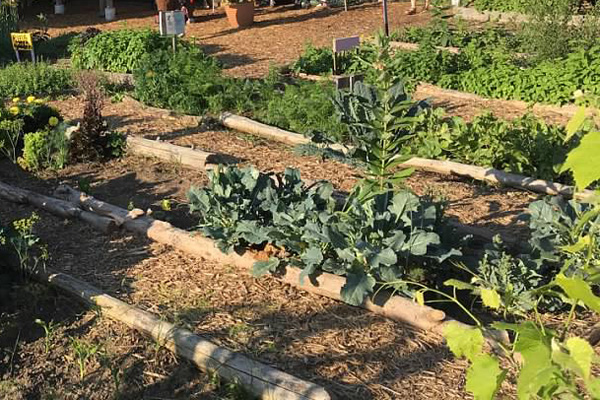The Buzz on City Blooming
Wiki Article
The Single Strategy To Use For City Blooming
Table of ContentsEverything about City BloomingAn Unbiased View of City BloomingThe Buzz on City BloomingSome Ideas on City Blooming You Should KnowNot known Factual Statements About City Blooming
Intrigued in expanding food for sale in the City of Chicago? Below is a listing of regularly asked questions pertaining to the guidelines and laws that growers must take into consideration when planning a metropolitan farming task.
The zoning amendment does not customize any kind of other codes managing composting, building authorizations, buying or leasing City possessed building, organization licenses or environmental contamination. There are existing codes that regulate these issues and they remain in complete effect and may be relevant to your job. Area yards are usually possessed or managed by public entities, civic organizations or community-based companies and kept by volunteers.
Urban farms expand food that is planned to be sold, either on a nonprofit or for-profit basis. Due to their industrial function, metropolitan ranches require an organization permit.
The Ultimate Guide To City Blooming
Composting is enabled however just for plant product that is produced and utilized on website. The quantity of compost product can not surpass 25 cubic yards at any kind of provided time according to the requirements in 7-28-715 of the City's Municipal Code. Yes. Because the dirt at the majority of brand-new garden websites requires changing, garden compost, dirt, timber chips, or various other materials can be acquired to create or enhance the expanding area - sustainable gardening.
If a structure authorization is needed then the hoophouse will certainly be taken into consideration an accessory building. You can figure out even more about the structure license requirements by contacting the Division of Buildings. The 25,000-square-foot size restriction is intended to stop a single neighborhood garden from dominating an offered block or interfering with the block's existing household or industrial character.
The limitation does not put on yards situated in Public Open Area (POS) areas. Can there be greater than one area garden that is 25,000 square feet on a solitary block? Yes. The dimension restriction relates to specific yards, not to specific blocks. No. Fencing is not needed, nonetheless, gardens that have big parking lot may be needed to mount fencing or various other landscaping features.
4 Easy Facts About City Blooming Shown
B1 & B2 areas call for that all industrial use activities be performed inside your home. Is fencing required for metropolitan ranches? Fences may be called for, along with landscaping and screening, for specific car park locations and outdoor job or storage locations depending on area and the details activity taking area.Urban ranches call for building licenses and zoning authorizations prior to building and construction (balcony and patio garden design). Various other forms of city testimonial may be needed depending on particular frameworks, activities, dimension, landscaping, licensing, public health and stormwater monitoring concerns.
Yes. The sort of certificate is identified by what is happening at the website. The Division of Service Affairs and Consumer Security can help establish the certain sort of company certificate that's required. Yes. Off road auto parking is required for most commercial projects in Chicago. The called for variety of garage is based upon the number of workers dealing with website and not the square footage of the expanding space.
City Blooming Can Be Fun For Everyone

A metropolitan farm can offer garden compost product created on website, nonetheless, the operation must comply with the policies in 7-28-715 of the Chicago Municipal Code. Aquaponic systems are enabled inside your home on urban farms in many zoning districts.
Approximately 5 hives or swarms of honey may be kept as an accessory use. Nevertheless, beekeepers should register with the Illinois Division of Farming. For additional information regarding the suggested zoning change you may call the Department of Housing and Economic Development, Bureau of Planning and Zoning at 312.744.8563.
Farming in cities and urban areas An urban farm in Chicago. Urban agriculture describes numerous techniques of growing. https://trello.com/u/cityblooming, processing, and dispersing food in metropolitan locations. The term also relates to the location activities of pet husbandry, tank farming, beekeeping, and horticulture in a metropolitan context. Urban farming is differentiated from peri-urban farming, which happens in rural areas at the side of suburbs.
Some Known Facts About City Blooming.
, who look for to form social networks established on a common ethos of nature and neighborhood holism. These networks can create by way of official institutional assistance, coming to be integrated right into local community planning as a "shift community" motion for sustainable Your Domain Name metropolitan growth.Some of the first evidence of city agriculture comes from Mesopotamia.
Report this wiki page